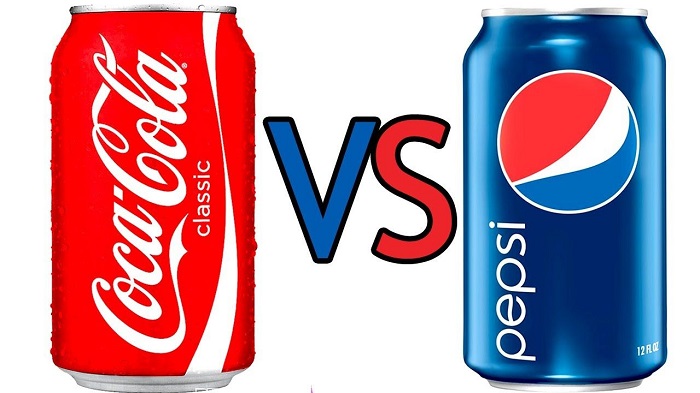
With its headquarters in Harrison, New York, PepsiCo was first founded by Caleb Bradham, a pharmacist and industrialist who first coined the term “Pepsi-Cola” in 1898. The merger of Pepsi-Cola and Frito-Lay established PepsiCo, Inc.
This company, PepsiCo is now a multinational food, snack and beverage cooperation having broadened its avenues from merely their brand product, Pepsi, to other food and beverage ranges as seen in its acquisition of Tropicana(1998), Quaker Oats(2001) and most recently Gatorade.In the 2018 Fortune 500 list, PepsiCo ranked No. 45 of the largest United States corporations by total revenue.
Coca-Cola was first introduced as a patent medicine when John Pemberton was looking for a substitute for morphine which he got addicted to it during WWII in the nineteenth century. The drink was named after two of its primary ingredients- the coka leaves and Kola nuts. According to Interbrand’s “Best Global Brands” since the 2015 study, Coca-Cola ranks third after Apple and Google and it ranked No. 87, on the 2018 Fortune 500 list of the largest United States corporations by total revenue.
The legendary feud between Coca-Cola and PepsiCo began in 1886 with the inception and creation of recipe for coke by Pemberton. Caleb Bradham creates his own recipe for Pepsi-Cola, thirteen years later in 1898. By 1904, the annual sales of Coca-Cola had already exceeded a million gallons. Coke also designed and developed their iconic contour shape bottle, endorsed their products using big celebrities and even expanded to Europe. Whereas, owing to the high rationing of sugar in WWI, PepsiCo went bankrupt and once again eight years later, in 1831 but this time it made a quick recovery with the aid of Charles G. Guth, president of Loft Inc.(candy store chain) who let go of Coke and bought Pepsi-Cola. In 1940, at the start of WWII, in order to cope with the war time sugar rationing issues, Mack bought a sugar plantation. They also began to amp up their advertisements and introduced Pepsi cans in 1945. In order to deal with the competition, Coke Commercials hit the television sets in 1950 first airing on thanksgiving day and later also had its radio debut in 1953. Meanwhile, Pepsi tried to rebrand in order to keep up. Coke launches sprite on February 1, 1961 which is a huge success till date and went public, in 1962, at $101/share. Finally in the mid-sixties it is seen that Pepsi merges with Frito Lay to create PepsiCo and this set the stage for the present day war between the two soft-drink companies. It is around this time that they introduced diet sodas as well.
In the present day situation, a new trend seems to have emerged. With the decrease in the overall sales of soda in the last decade, it is noted that people seemed to have shifted from purchasing high sugar saturated drinks or drinks with artificial sweeteners to more healthier options such as fruit juices. For this reason, both Coca-Cola and PepsiCo decided to diversify their beverage products and invest in products like juices, tea and bottled water. In India, Coca-Cola launched the new product Fanta Green Mango while PepsiCo owns Tropicana juice and Slice. PepsiCo also introduced “Hello Goodness” vending machines and organic Gatorade giving Coca-Cola a tough battle which further intensified owing to its large profiting snack market business. PepsiCo not only owns popular brands like Tostitos, Cheetos, Doritos, Lays and Quaker Oats and many more, they are also acquiring Bare Foods Co as Indra Nooyi, their CEO feels that Bare Foods is in keeping with the PepsiCo ideology of committing to “Performance with Purpose, our vision of making more nutritious products, while also reducing added sugars, salt, and saturated fat.” Meanwhile, Coca-Cola struggles with the battle to tackle the situation and has resorted to relying less on carbonated soft drinks and more on healthier beverages. In this present shift in consumer landscape, PepsiCo seems to have the upper hand but Coca-Cola is not lagging far behind and may catch up with the trends in the fore coming years.

Mar 24, 2020

Sep 24, 2022